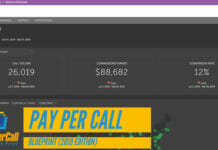For any marketing professional, learning how to create a good marketing funnel is a mandatory skill. A good funnel builder must have a thorough understanding of their market, and their source of traffic.
In this article, we’ll talk about what a marketing funnel is, what the stages are, which marketing pieces can help you create a good funnel, and finally describe the connected buying process phases.
You will understand funnels better after working through this article and building funnels that resonate with your traffic is the only way to build a sustainable marketing business.
For example, facebook traffic will behave much differently than Google search engine traffic. So the way you engage those people would be different. These insights are what will set you apart from those who fail.
Marketing funnels are not just for pay per call businesses, but are necessary for any business’ sales. Marketing funnels can be created through many different methods, including Facebook ads and email campaigns. Let’s talk a bit more about what a marketing funnel really is.
What is a Marketing Funnel?
 Essentially, a marketing funnel is a set of reactions and actions you move your customer through during the sales process. It’s called a sales funnel because, if you think about it, a lot of people see a particular Facebook ad, but fewer people actually click through, make that phone call, and end up purchasing a product and becoming a staunch supporter of a brand.
Essentially, a marketing funnel is a set of reactions and actions you move your customer through during the sales process. It’s called a sales funnel because, if you think about it, a lot of people see a particular Facebook ad, but fewer people actually click through, make that phone call, and end up purchasing a product and becoming a staunch supporter of a brand.
In other words, we can visualize the sales marketing process like a funnel, with a lot of customers flooding into the top, but only a small stream of steady customers coming through the hole in the bottom. Make sense? Okay, moving on.
What are the Stages of a Marketing Funnel?
There are really six stages of the marketing funnel, and these include every part of building brand, service, or product awareness through creating loyal customers.
- Awareness
- Interest
- Evaluation
- Commitment
- Sale
- Brand loyalty and repurchasing
Some marketing funnels do not include the final stage, “brand loyalty and repurchasing,” but I consider this to be the most important stage of a successful product — you want people to recommend your product or brand to their friends, family, and business partners — that’s how you build a truly successful business for your clients.
Okay, let’s delve into some deeper details about the marketing funnel so you can completely understand the components of the process and how they work.
Marketing Pieces that Create a Good Funnel
There are many different ways to engage your customers or your clients’ customers; these include Facebook ads, SEO, ebooks, white papers, videos, direct email campaigns, and other social media ads.
In addition, case studies, Drip campaigns, newsletters, trials, demonstrations, and webinars can all be successful ways to raise awareness, both at the beginning of the funnel and toward the end.
While these pieces are all good awareness and interest raisers, it’s unlikely they will funnel customers all the way through the sales process unless they are also carefully directed at the correct product or brand audience.
For example, no matter how many white papers you have on what makes your lawn mower the best, people without lawns will never be interested in buying it.
Therefore, attracting these people to your product/brand is a waste of your time and theirs.
Let’s take a closer look at the sales process, so we can better understand how customers choose products and brands.
Customer Sales Funnel Buying Phases
[thrive_text_block color=”blue” headline=”Fun Fact”] The main sales process businesses and individuals use today is based on one invented 110 years ago by a man named John Dewey. He was a psychologist, and helped get the new advertising industry on track in 1910. He believed that people always arrive at the decision to buy through the same five-step process.[/thrive_text_block]
- Recognizing a need
- Searching for information
- Evaluation
- The purchase decision
- Post-purchase
Obviously, this process was a bit different back in 1910; our needs today are read by the Internet and our previous purchasing decisions, as well as demographic information about who we are as people. Today we can research anything on the Internet and decide for ourselves which products and services are worth our money. This means, in turn, that we are mainly marketed to where we spend a lot of our free time — you guessed it, the Internet and social media websites. Let’s walk through Dewey’s five-step process.
Phase 1: Recognizing a Need
Without a need there is not going to be a sale. Needs are predicated by problems you need solving — if you can prove your customer has a problem, that creates a need. These needs can be obvious to your customers or more subtle, and may have different aspects, for instance needing a new entertainment system in a house or just needing a good new pair of shoes. There are many different aspects to recognizing a need for a customer and marketing to it, but knowing your audience is a great place to start. Everyone needs new shoes, but a new entertainment system is usually something people over the age of 30 might consider buying.
Phase 2: Searching for Information
We know what this means: spending hours online searching for the perfect, cheapest, highest-quality product or service that will fit the recognized need — and this is where the marketing funnel first starts to narrow down. This is also where customers are the most likely to accept new information about a product — so online reviews, Facebook ads, recommendations from family and friends, free trials, demos, white papers, and plain old Google searches are great ways to reach them.
Phase 3: Evaluation
During this stage your customers pull together a typed, mental, or even written list of possible products/services they would consider buying — a best of the best list. The customer then narrows the funnel down even further by evaluating each one to find the best product for them. At this point, customers may not be able to get further information online — the only things that will sway them now are online reviews or free trials.
Phase 4: Purchase Decision
This is the most important phase of the buying process, obviously — this is when the buyer makes the decision to purchase a product or service, but most of the marketing work has already been done by now. The funnel is narrowed down to its smallest point, and only buyers make it through to the final buying phase. Trusted peers have great influence during this phase.
Phase 5: Post-purchase
Finally, we come to the post-purchase phase of customer buying, which is very important, as well — mainly because people who buy and like a product or service can now flock onto social media sites and product review sites to tell the world how great the product is. People are proud of their good decisions, and love to tell others about their good purchasing decisions — this part of the buying phase seals the deal and usually creates loyal customers and future customers as well.
And there you have it — now you understand what makes a good marketing funnel, how to market to your customers and your clients’ customers, and how the overall buying process works for the consumer and the marketer. Now take what you know and start building your marketing business — there’s no time like the present.
























